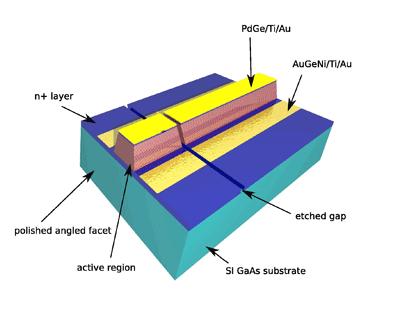Gain Measurements
We are doing some work on understanding the gain mechanisms in THz QCLs and developing a method to measure the gain.
The process of designing a THz quantum cascade laser active region involves the adjustment of a large number of parameters in order to achieve lasing at the desired wavelength while maximising gain and minimising undesirable effects such as reabsorption of the emitted radiation. The design process is often iterative, with the results of measurements of wafers grown in each iteration being used to further refine the design of the next iteration. In such a process, it would be invaluable to have an accurate method of measuring the gain coefficient of each active region.
Several methods for measuring the gain and loss of a semiconductor laser already exist, and have been applied successfully to different types of lasers, including near- and mid-infrared QCLs. Measurements have also been performed on some far-infrared or THz QCLs, but success has been limited at longer wavelengths.
We use laser cavities which have been split into two electrically separate sections to study the effect of radiation from one section on the electrical characteristics of the second section. We have also made some double section devices with angled facets to prevent multiple reflections. These can be used to calculate gain spectra of the active region by measuring spectra with the two sections switched on and off in different combinations, using a method adapted from one used in MIR QCLs[1].
References: [1] S. Barbieri et. al. IEEE Journal of Quantum Electronics, 36:736–741, 2000.

